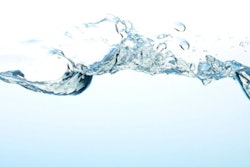The prospect of a substantial hike in the price of contrast media has edged closer after the European Council approved a revised EU directive on urban wastewater treatment.
According to a European Council statement issued on 5 November, "Producers of pharmaceuticals and cosmetics – the main source of micropollutants in urban wastewater – will need to contribute a minimum of 80% of the additional costs for the quaternary treatment, through an extended producer responsibility (EPR) scheme and in accordance with the 'polluter pays' principle."
Previously, the cost of wastewater clearance was covered by general taxes in individual countries/communities, but now the prospect of an additional targeted tax on contrast media manufacturers is causing concern among the medical imaging community.
The new rules are one of the key deliverables under the EU's zero-pollution action plan, the council stated. "The revised directive extends the scope to smaller agglomerations, covers more pollutants, including micropollutants, and contributes to energy neutrality."
Member states will have to collect and treat wastewater from all agglomerations above 1,000 population equivalents -- a measurement used to calculate urban wastewater pollution -- according to EU minimum standards. This is instead of the threshold of 2,000 population equivalents set in the previous rules).
"To better tackle the pollution and to prevent discharges of untreated urban wastewater into the environment, all agglomerations between 1,000 and 2,000 population equivalents need to be provided with collecting systems and all sources of domestic wastewater need to be connected to these systems by 2035," the council said.
For such agglomerations, by 2035 member states will have to remove biodegradable organic matter from urban wastewater (secondary treatment) before it is discharged into the environment. "Derogations will apply to member states where the coverage of the collecting systems is very low and therefore would require significant investments. Member states that have joined the EU more recently and have already made more recent significant investments to implement the current directive (i.e., Romania, Bulgaria, and Croatia) can also benefit from derogations," the statement pointed out.
By 2039, the removal of nitrogen and phosphorus (tertiary treatment) will be mandatory for urban wastewater treatment plants treating urban wastewater with a load of 150,000 population equivalents and above. For those urban wastewater treatment plants, by 2045 member states will have to apply an additional treatment to remove micropollutants, known as quaternary treatment, the council added.
The directive will now be signed and published in the Official Journal of the EU, and it will enter into force on the 20th day following publication. EU member states will then have up to 31 months to adapt their national legislation to take account of the new rules (i.e. 'transpose the directive').
The patient's perspective
Most patients are likely to support this initiative, judged on the findings of an Italian study published on 31 October 2024 by European Radiology. In the study, patients demonstrated a high willingness to cooperate in reducing the environmental impact of contrast agents, allowing for a potential recovery of around 51% for iodinated and 13% for gadolinium-based contrast agents. Over 90% of screened patients agreed to extend their stay by up to 60 min and collect their urine in dedicated containers.
"The patient compliance was certainly higher than that expected when the protocol was planned," noted Moreno Zanardo, PhD, post-doc research fellow at Università degli Studi di Milano in Milan, and colleagues. "This result plays in favor of a high "green awareness" among patients, showing a strong willingness to cooperate with healthcare personnel for environment protection."




















